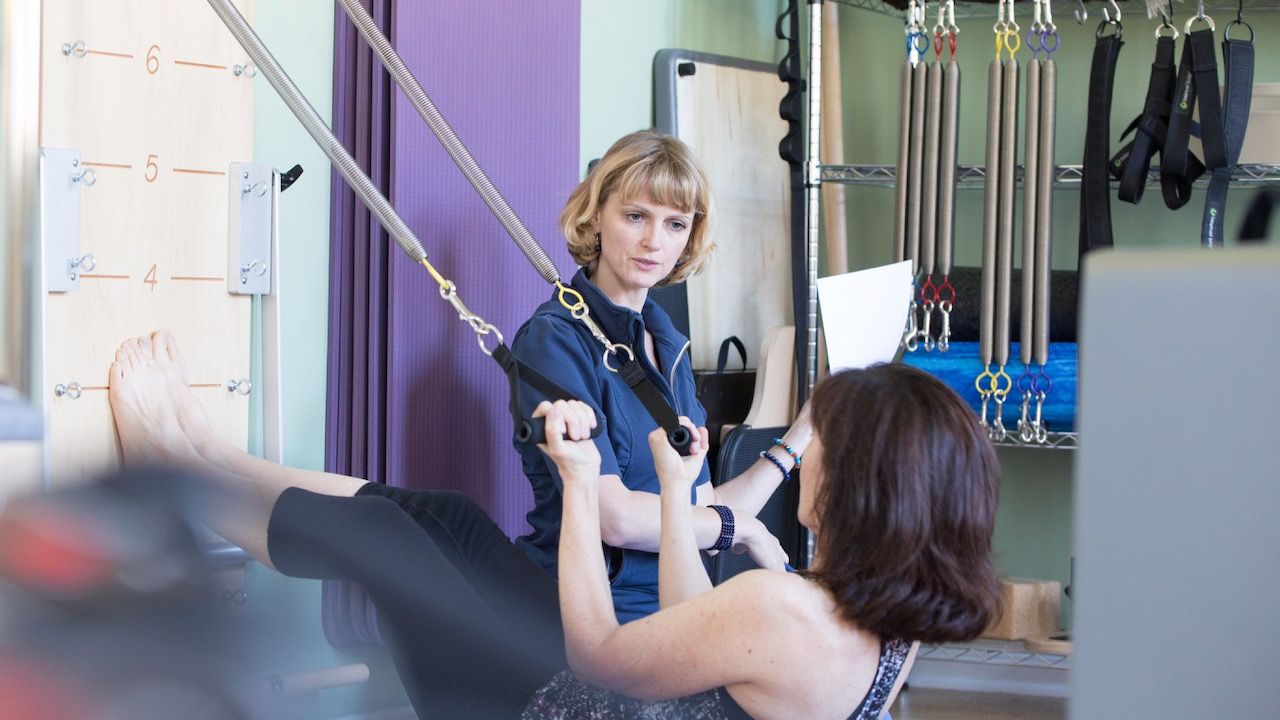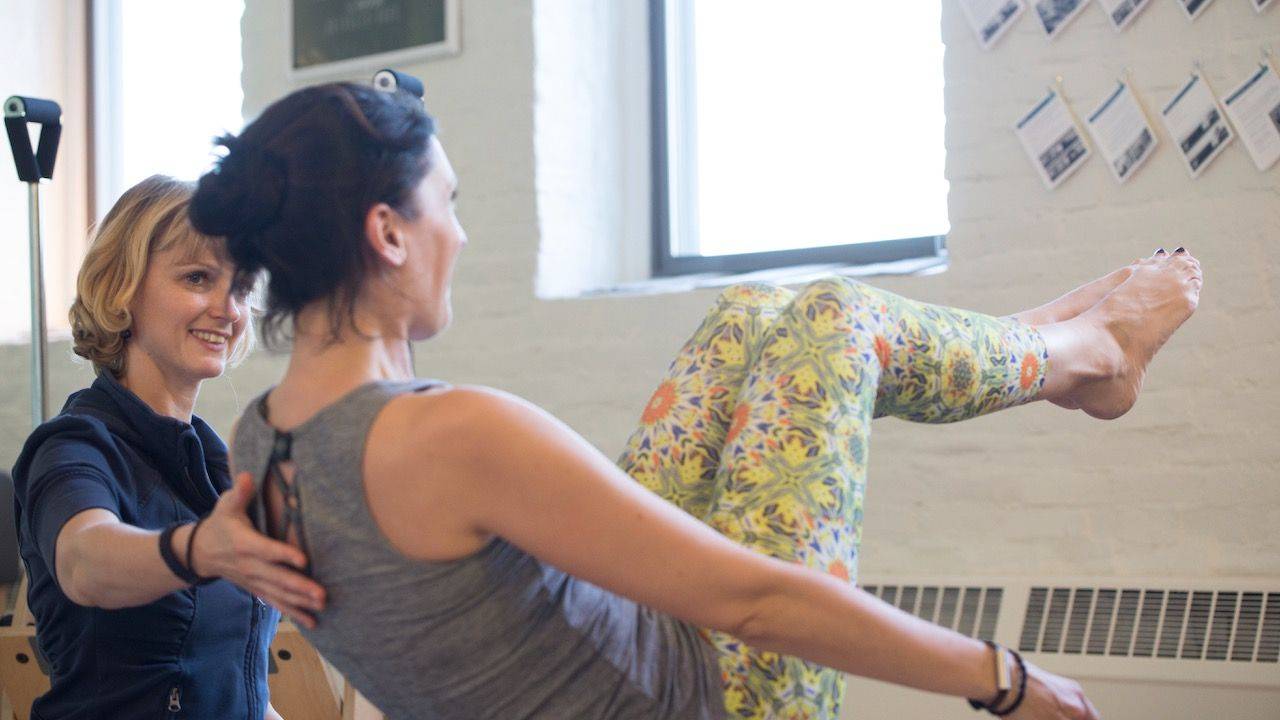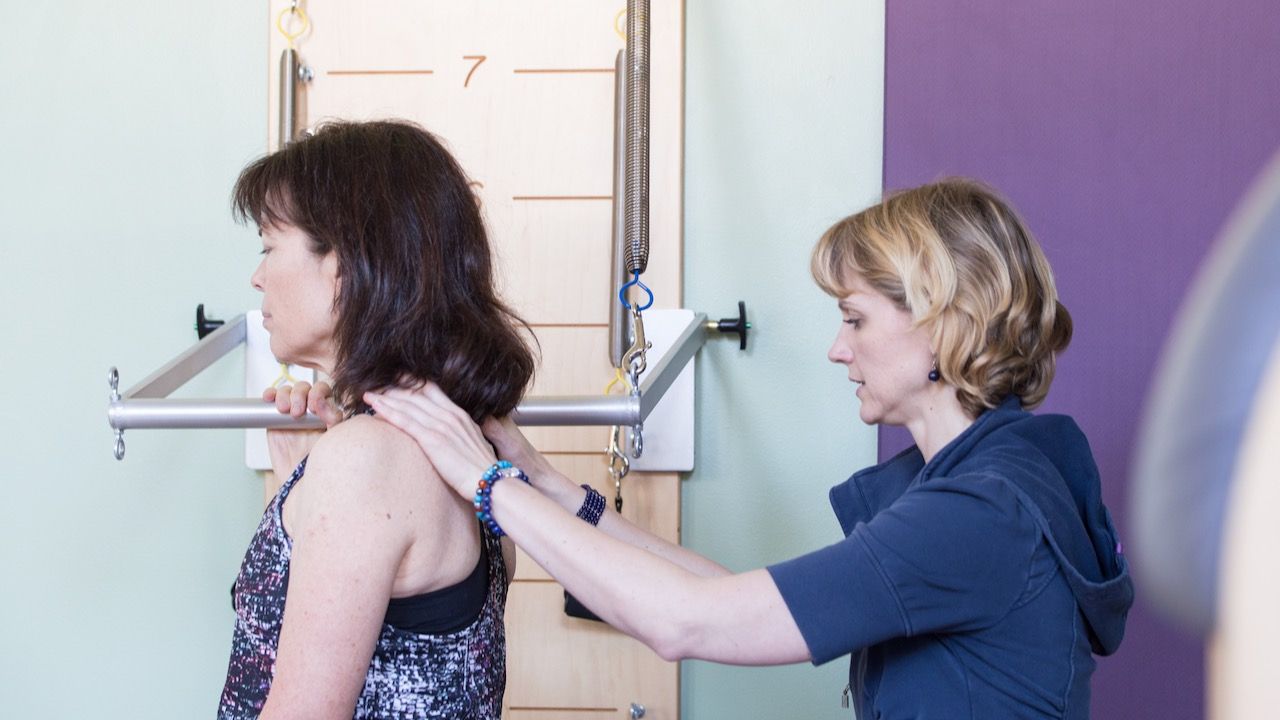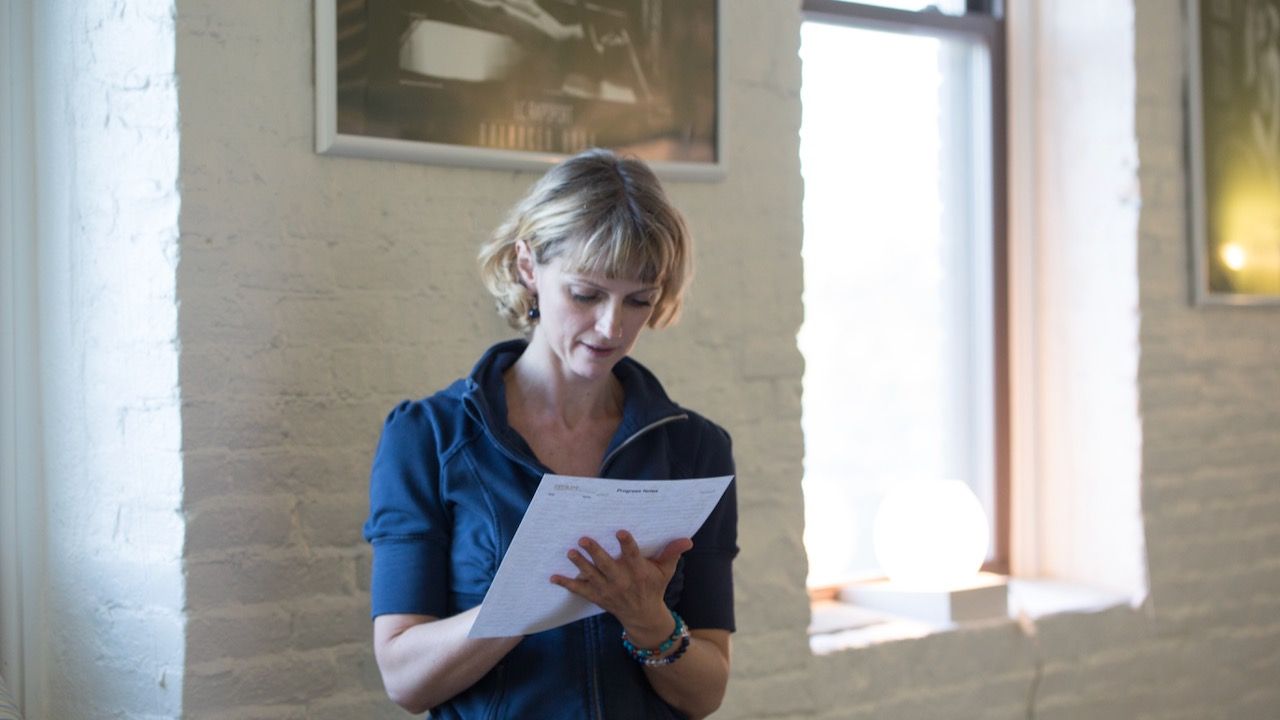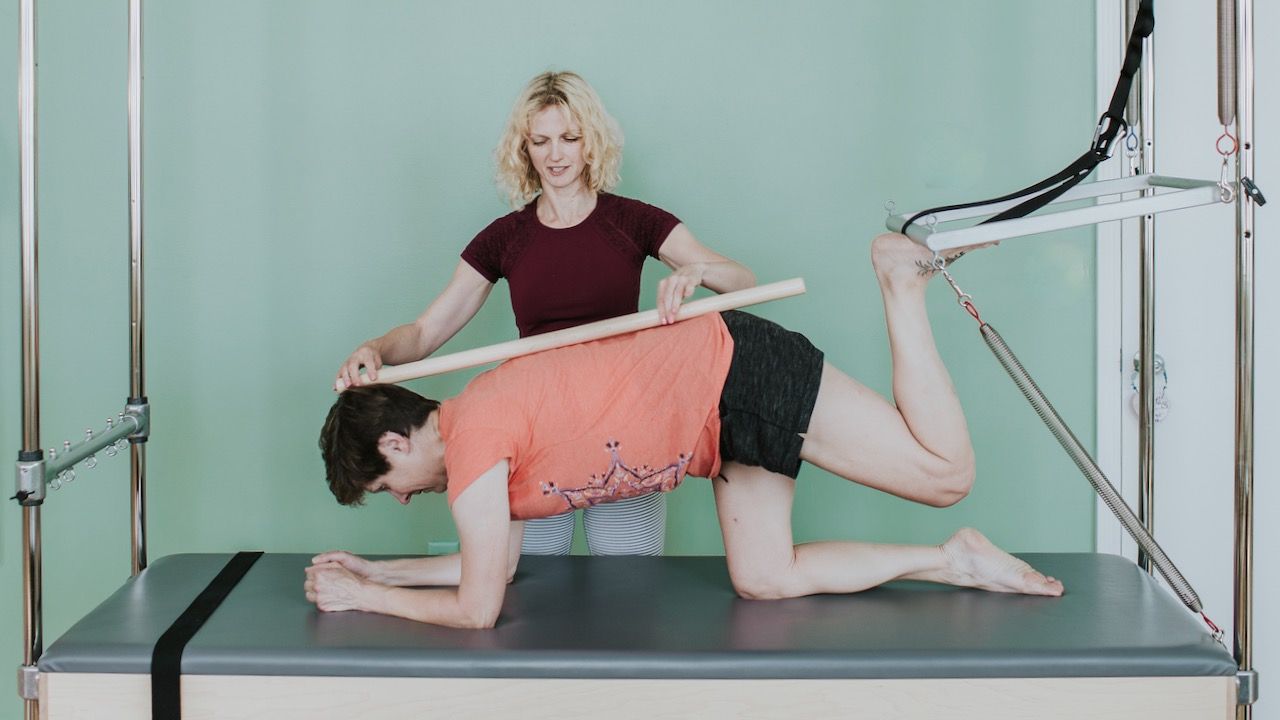
Knee Floats and Table Top: How To Stop Overworking Your Thighs and Hip Flexors?
Jan 13, 2021I recently received this question from one of my Pilates Encyclopedia members:
Some of my mat class clients are fit and strong and have extremely tight hip flexors or work too little from their bottom, specifically in Knee Floats. They only feel their thigh muscles instead of the TA and bottom. I have the same problem in my body and I’ve worked on that, but in group classes they often want to work fast and sweat. Would it be best to start with Bridging? What cues should I be using for Knee Floats when they overwork the thighs?
Same with Table Top and Teaser: if they only feel the front of the thighs, should they turn out more, squeeze their bum, open the knees, press the heels?
Great question! Due to the endless amount of hours most people spend sitting, our hips have developed a bias towards hip flexion. It has become easier for us to flex the hip and much harder to extend the hip. Our glutes have atrophied (glute amnesia is a thing now) and our hip flexor muscles have shortened.
In addition, in many Pilates mat classes, the teacher chooses way too many exercises in a supine position (lying on your back) that strengthen the anterior line of the body. Exercises such as Knee Floats, Table Top, Single Leg Stretch, Double Leg Stretch, or Teaser are all hip flexion exercises. Yes, you might think of them as abdominal exercises, but they include hip flexion. This basically contributes to the pattern of shortening your hip flexors.
Think about the classes you teach. Many of us probably teach 70% of the class in supine or in seated (also mostly hip flexion), and then maybe 5% on each side, and then maybe 5% on the stomach, and 5% in quadruped.
Hip flexion exercises are the most comfortable (because we practice hip flexion so much by sitting for hours) and prone exercises are probably the least comfortable. So we do less of that.
However, if we avoid something, it doesn't get better. My recommendation is to dramatically shorten the time spent on your back. Choose two or three supine exercises and then move on.
I also intersperse my abdominal exercises with Bridges. For instance, I start with a Bridge because it's a great way to warm up the spine. Then, I might do a Chest Lift, Knee Floats, and Tabletop, then I'll go back to Bridging. For this Bridge, I might choose a different variation - i.e. the oblique version or a single-leg variation. Then we can do Double Leg Stretch or The Hundred, then another Bridge. Switching back and forth between working the front and the back sides of the body will help bring the needed balance to your hips.
I highly recommend you include Bridging, Upward Table, or Back Control in each of your classes. Steer clear of the regular Plank because we do that all the time. It's okay to do once in a while, but do a lot more of the upward-facing planks. Everybody's gonna hate it but if those people want to work hard, they will kind of love it, too. : )
If people want to move fast, they're just going to use their current habits. It'll be fun for them but it won't bring balance to their hips. The hip flexor cramping will never ever stop.
In terms of cueing the TA in Knee Floats (aka Knee Folds): I would ask them to feel the weight of each buttock touching the mat. As they lift one knee, they'll feel how the pelvis tends to tip to that same side. This is due to a lack of stability. They should then try it again and keep both buttocks glued to the mat while lifting one knee (alternating). Pay close attention to the moment where you switch to the other leg (on the floor). You'll feel your pelvis shifting back to the center. Throughout the exercise, keep 50% of the weight on each buttock.
It's really helpful to move your student's focus away from the body part that's moving (leg) to the body part that's stabilizing. Once they pay attention to the right thing, they'll want to do it well, which will result in a slower and more controlled movement and they will look for the work in their abdominals instead of in their legs.
If you see someone's pelvis shifting but the student is not aware of it ask them "Do you feel that your pelvis is dropping on one side?" Then the student might wake up and say "No, I don't." Then you can help them either with a tactile cue or with another verbal cue until they notice it. This process of helping your students be aware of their instability will help dramatically to slow the exercise down.
Take a look at this tutorial of Knee Floats:
Once Knee Floats works well, progress to Table Top:
Lift one leg into a 90/90 position and then the second leg also. Your abdominals have to stabilize your spine and your hip flexor muscles have to hold up your legs. If your student doesn't feel her abdominals anymore, then she's lost the imprinted position.
Here's a tutorial for Table Top:
It might be helpful to squeeze a ball between your knees -this will activate your adductors and anterior oblique sling - and could make a huge difference.
Opening your knees and pressing your feet together can help activate your bottom. (Make sure to keep the imprinted position while squeezing).
Since Teaser on the mat is a C-curve exercise, you need to do a good job teaching your students how to posteriorly tilt the pelvis. I would do this with a very slow partial Roll Down with bent knees or Assisted Roll Up. For example, count to 8 as they roll down. They are only allowed to rest their head on the mat when you say 8. If they go fast, then they will most likely be a bit sloppy in their spine articulation. Using a slow count will make them feel as if they are holding the exercise, which feels hard for them and they might be "on board" with your strategy. When they are good at that, have them lift their legs into Table Top (or a Frog) and practice the same partial Roll Down. That'll be super hard. Don't let them go all the way to the floor because that will encourage momentum on the way up and the spell is broken.
Lastly, your students will be more willing to listen to you if you explain to them how it affects their life. Not in (biomechanical) theory but how it will help them i.e. run better, stay injury-free, have fewer cramps, less backache, etc. Get to know your students. What are their ambitions movement-wise? What do they want to be able to do? Then relate your instruction to their ambition. Find a specific reason for each of them, that they can relate to.
I think we Pilates teachers have incredible power to change people's lives for the better. It's our job and duty to inform and educate our students about what's good for them. Too many teachers do whatever the student asks for, regardless of whether that is actually helping them. You have the right to show your students some tough love by NOT granting them every wish but by choosing exercises that you know they need, such as hip extension exercises.
If you're looking for more biomechanical explanations and cueing tips for all your favorite Pilates exercises, including more Q&As from other Pilates teachers, check out the Pilates encyclopedia membership. Learn more...
Get support with your day-to-day teaching challenges
Ready to Teach Pilates with Clarity and Confidence?
Sign up to receive my weekly email newsletter. It's jam-packed with Pilates articles, videos, exercise tutorials and teaching tips.
Only super valuable stuff here. No spam ever. Unsubscribe any time.








